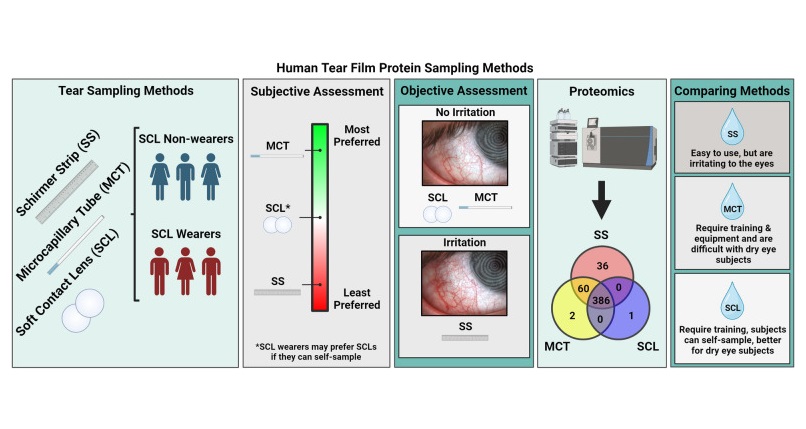New Lens Method Analyzes Tears for Early Disease Detection
Posted on 20 Dec 2024
Bodily fluids, including tears and saliva, carry proteins that are released from different parts of the body. The presence of specific proteins in these biofluids can be a sign of health issues. Tears, in particular, are well-suited for detecting eye diseases such as glaucoma and macular degeneration, but they can also help identify systemic conditions like breast cancer and Alzheimer's disease. The challenge, however, is that collecting tears is difficult. Existing tear sampling methods can be uncomfortable, irritating to the eye, and typically yield reflex tears, which are less useful for disease detection. Now, researchers have developed an innovative technique using soft contact lenses to collect proteins from basal tears, offering a more efficient method for early disease detection.
While reflex tears are easily triggered by irritation, they are unlikely to contain the proteins needed for disease detection. These tears would dilute the indicator proteins that could point to a health issue. To avoid this, researchers at Brigham Young University (Provo, UT, USA) proposed a gentler approach: using soft contact lenses that naturally absorb proteins from the eye. Their tests showed that lenses made from the hydrogel material Etafilcon-A collected the highest protein levels without causing irritation.

In experiments, volunteers wore the contact lenses for just five minutes, and the lenses absorbed nearly the same range of proteins as traditional methods, but with significantly less discomfort. This new approach, as described in the study published in Clinical Proteomics, also allows patients to collect their own tears, removing the need for a trained optometrist. The research team is currently conducting further clinical trials to link specific tear proteins with diseases like macular degeneration and cancer. Their long-term goal is to make this method available in optometrists' and oncologists' offices, providing an easy and non-invasive way to detect early signs of various conditions.
“How many people could be helped if doctors could catch diseases before symptoms develop? With this new lens method, we could potentially screen for a range of health issues from analyzing tears,” said former grad student Robert Roden. “This project is very powerful in its scope. Any disease that your blood touches has the potential to show up in your tears. Hopefully this sampling can turn into a routine screening.”







 Analyzer.jpg)






